Typological Classification of Languages Languages are described by

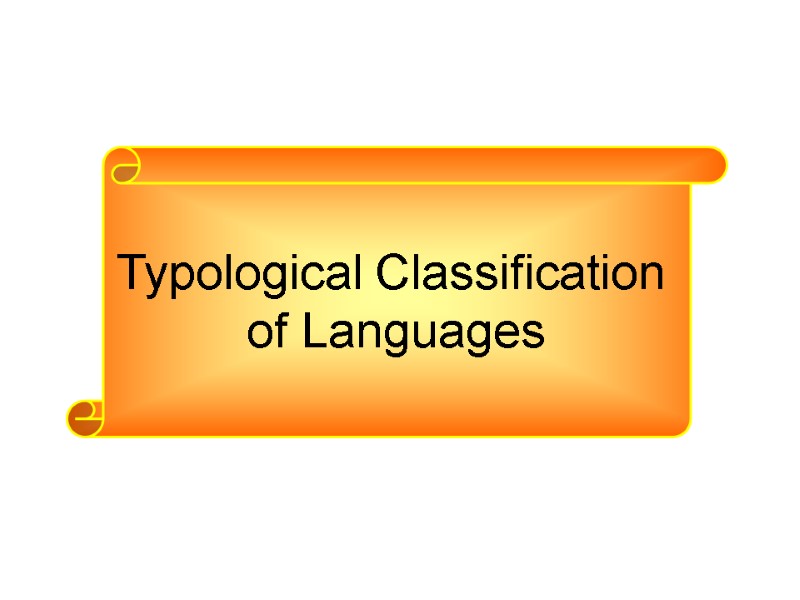
Typological Classification of Languages
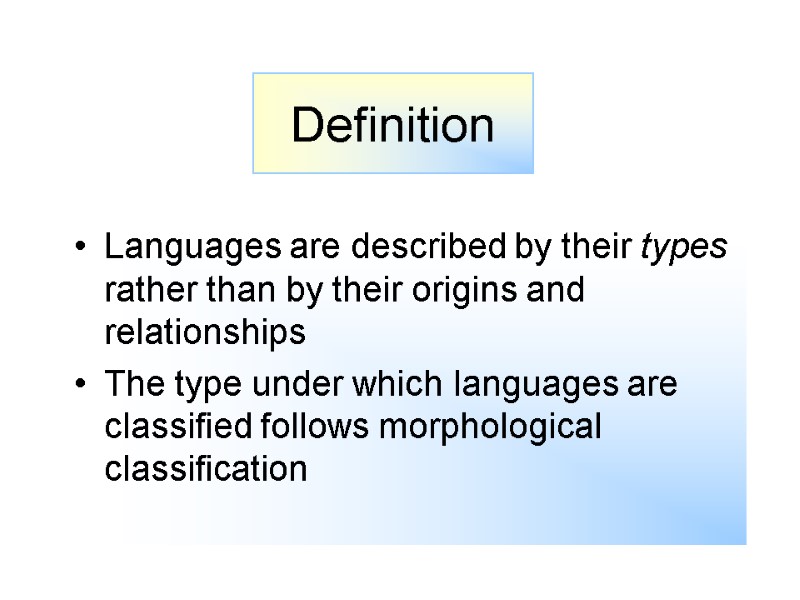
Languages are described by their types rather than by their origins and relationships The type under which languages are classified follows morphological classification Definition
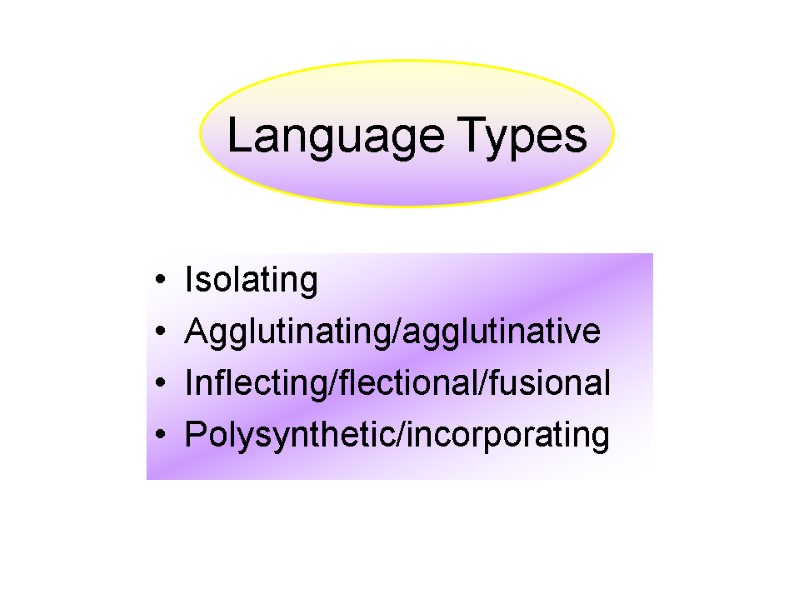
Isolating Agglutinating/agglutinative Inflecting/flectional/fusional Polysynthetic/incorporating Language Types
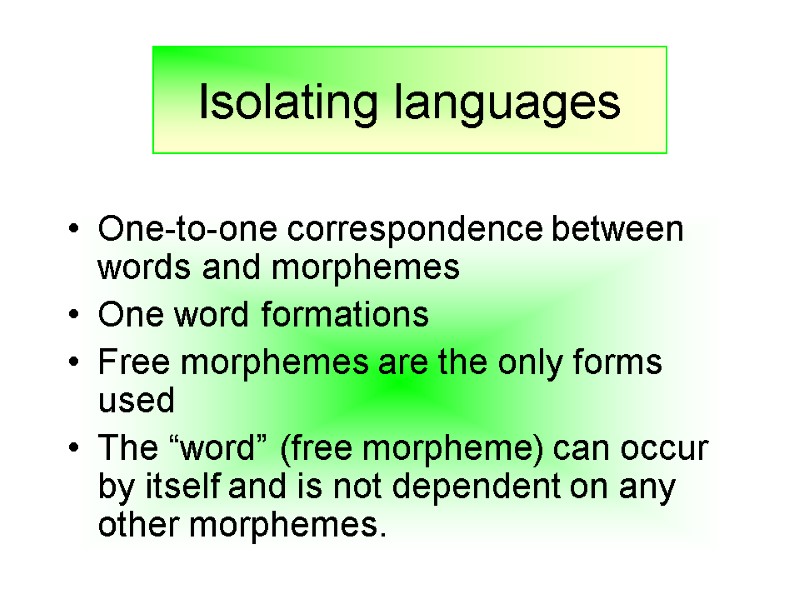
One-to-one correspondence between words and morphemes One word formations Free morphemes are the only forms used The “word” (free morpheme) can occur by itself and is not dependent on any other morphemes. Isolating languages

It is an unalterable unit whose function in the sentence is not usually marked by some grammatical device (affix, auxiliary) but only by position. Since the boundaries of syllables and morphemes coincide, these languages are sometimes referred to as monosyllabic. Isolating languages
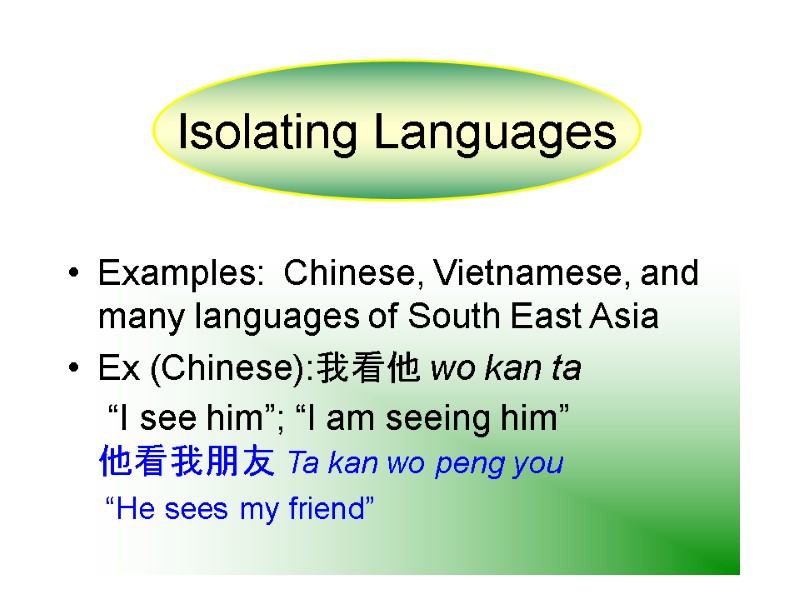
Examples: Chinese, Vietnamese, and many languages of South East Asia Ex (Chinese):我看他 wo kan ta “I see him”; “I am seeing him” 他看我朋友 Ta kan wo peng you “He sees my friend” Isolating Languages

Flexional/Fusional/Inflecting Languages Grammatical devices like affixes or internal changes in words to show grammatical relationships Free and bound morphemes are united Ex. Walk, walk-s, walk-ing, walk-ed Internal change: mouse-mice goose-geese
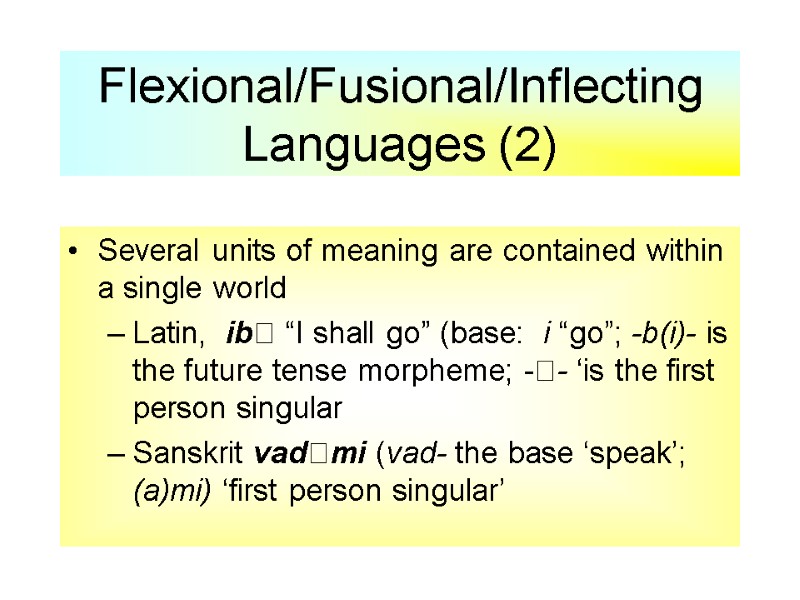
Flexional/Fusional/Inflecting Languages (2) Several units of meaning are contained within a single world Latin, ib “I shall go” (base: i “go”; -b(i)- is the future tense morpheme; -- ‘is the first person singular Sanskrit vadmi (vad- the base ‘speak’; (a)mi) ‘first person singular’
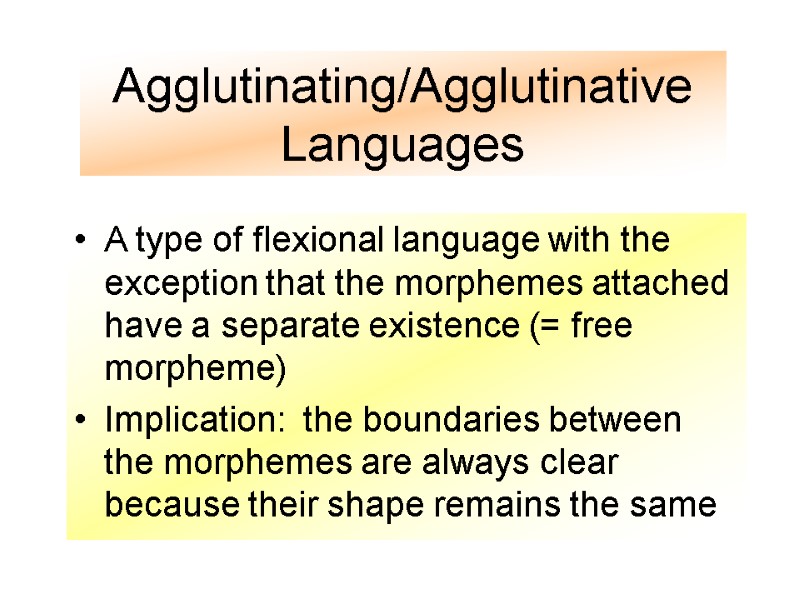
Agglutinating/Agglutinative Languages A type of flexional language with the exception that the morphemes attached have a separate existence (= free morpheme) Implication: the boundaries between the morphemes are always clear because their shape remains the same
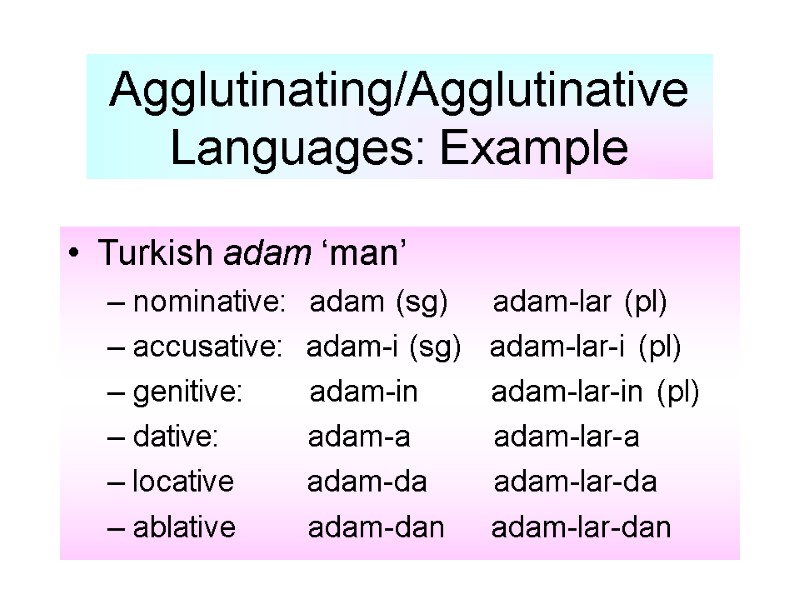
Agglutinating/Agglutinative Languages: Example Turkish adam ‘man’ nominative: adam (sg) adam-lar (pl) accusative: adam-i (sg) adam-lar-i (pl) genitive: adam-in adam-lar-in (pl) dative: adam-a adam-lar-a locative adam-da adam-lar-da ablative adam-dan adam-lar-dan
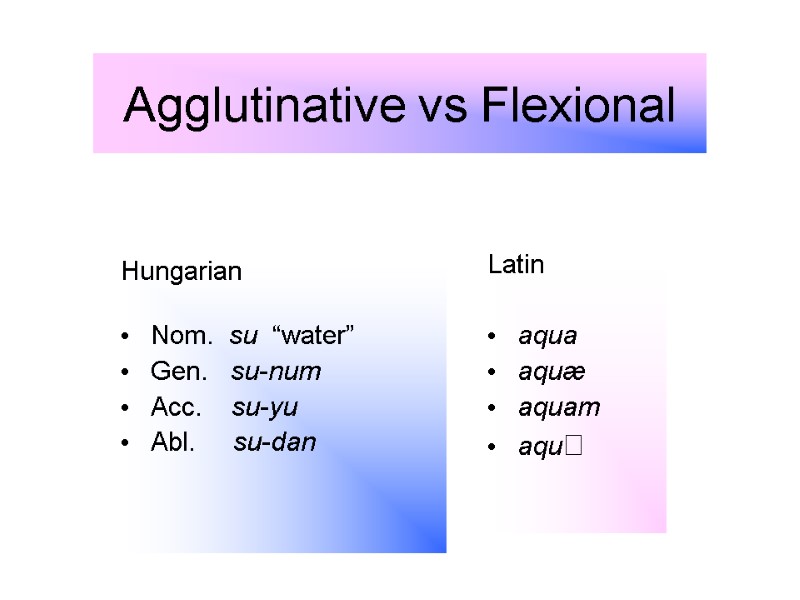
Agglutinative vs Flexional Hungarian Nom. su “water” Gen. su-num Acc. su-yu Abl. su-dan Latin aqua aquæ aquam aqu
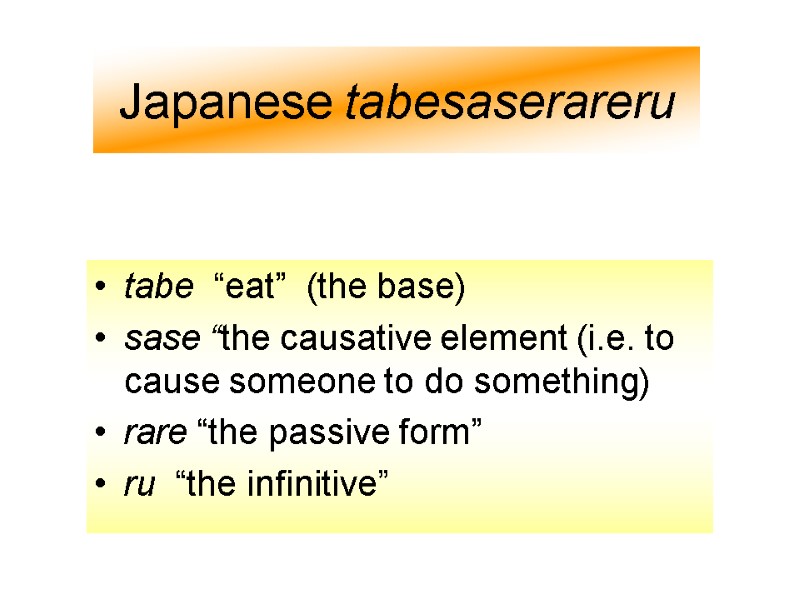
Japanese tabesaserareru tabe “eat” (the base) sase “the causative element (i.e. to cause someone to do something) rare “the passive form” ru “the infinitive”
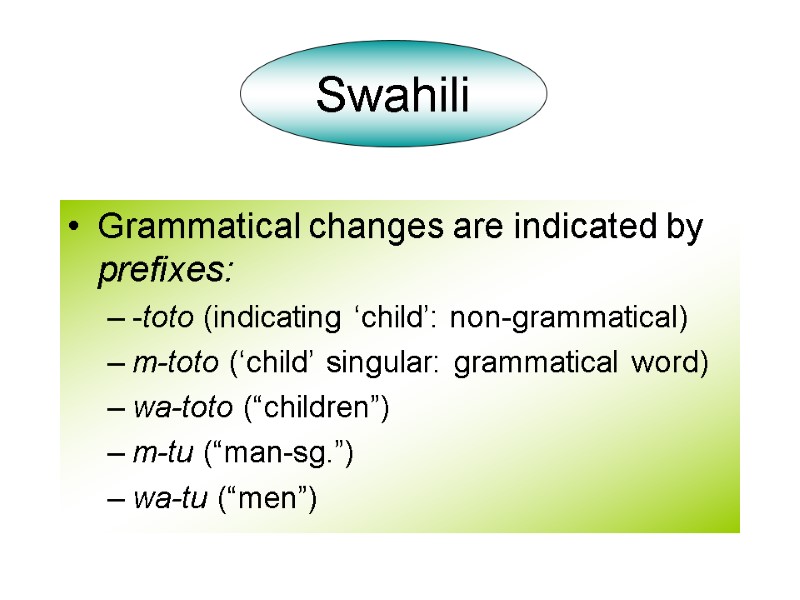
Grammatical changes are indicated by prefixes: -toto (indicating ‘child’: non-grammatical) m-toto (‘child’ singular: grammatical word) wa-toto (“children”) m-tu (“man-sg.”) wa-tu (“men”) Swahili
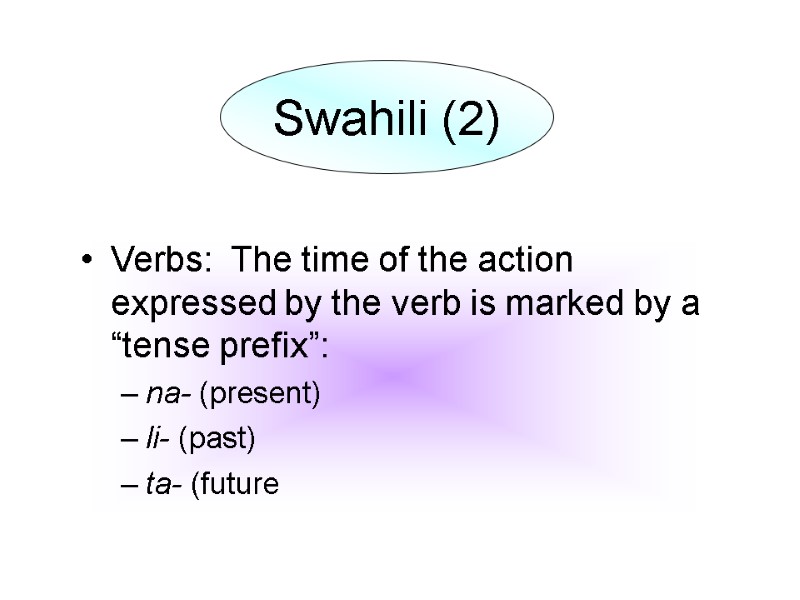
Verbs: The time of the action expressed by the verb is marked by a “tense prefix”: na- (present) li- (past) ta- (future Swahili (2)
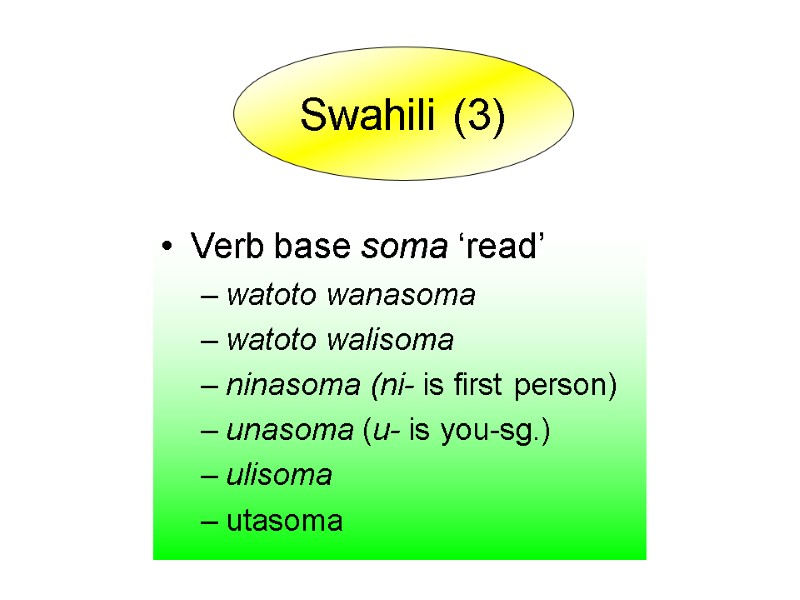
Verb base soma ‘read’ watoto wanasoma watoto walisoma ninasoma (ni- is first person) unasoma (u- is you-sg.) ulisoma utasoma Swahili (3)
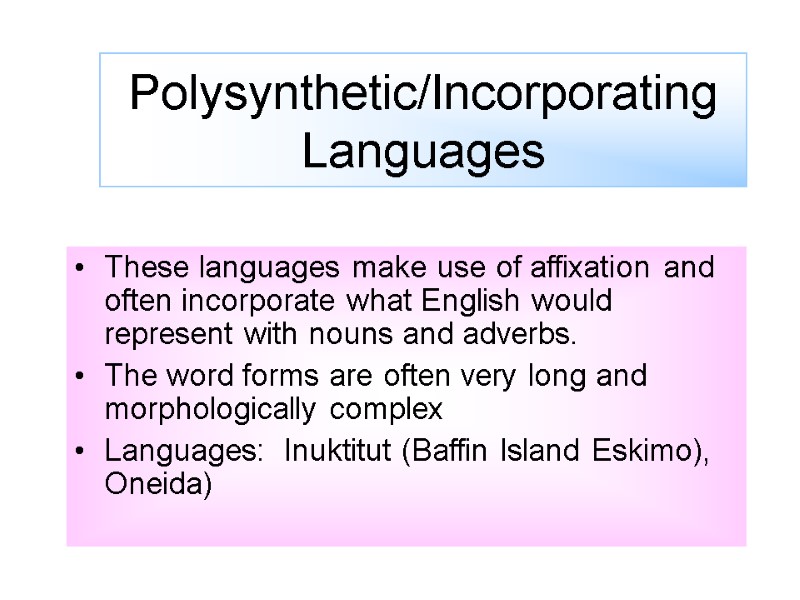
Polysynthetic/Incorporating Languages These languages make use of affixation and often incorporate what English would represent with nouns and adverbs. The word forms are often very long and morphologically complex Languages: Inuktitut (Baffin Island Eskimo), Oneida)
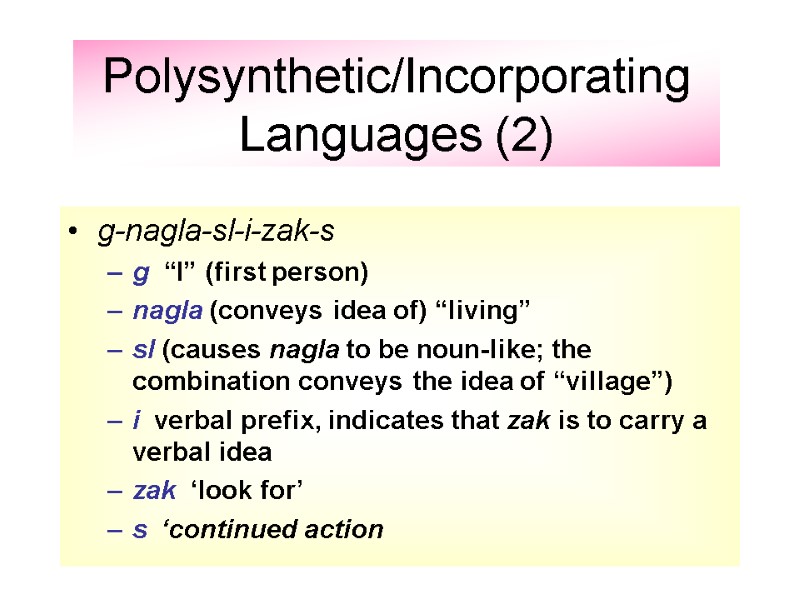
Polysynthetic/Incorporating Languages (2) g-nagla-sl-i-zak-s g “I” (first person) nagla (conveys idea of) “living” sl (causes nagla to be noun-like; the combination conveys the idea of “village”) i verbal prefix, indicates that zak is to carry a verbal idea zak ‘look for’ s ‘continued action
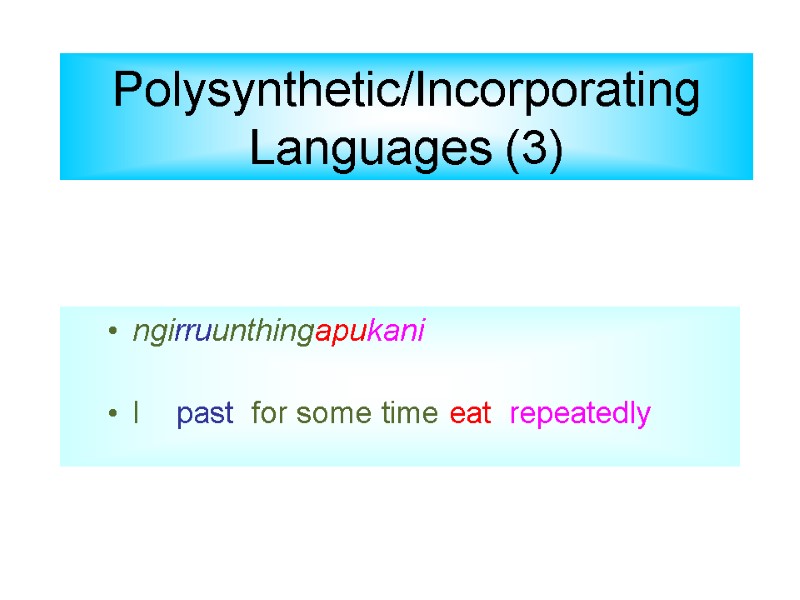
Polysynthetic/Incorporating Languages (3) ngirruunthingapukani I past for some time eat repeatedly
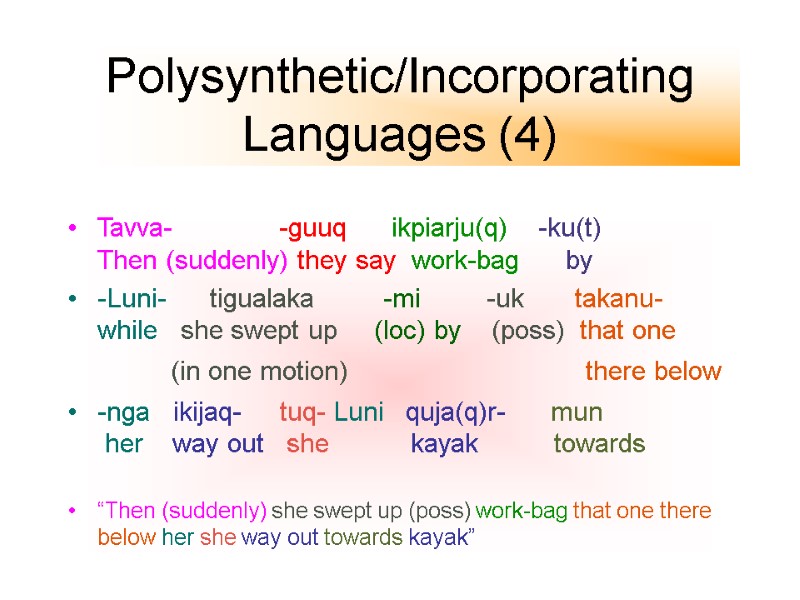
Polysynthetic/Incorporating Languages (4) Tavva- -guuq ikpiarju(q) -ku(t) Then (suddenly) they say work-bag by -Luni- tigualaka -mi -uk takanu- while she swept up (loc) by (poss) that one (in one motion) there below -nga ikijaq- tuq- Luni quja(q)r- mun her way out she kayak towards “Then (suddenly) she swept up (poss) work-bag that one there below her she way out towards kayak”
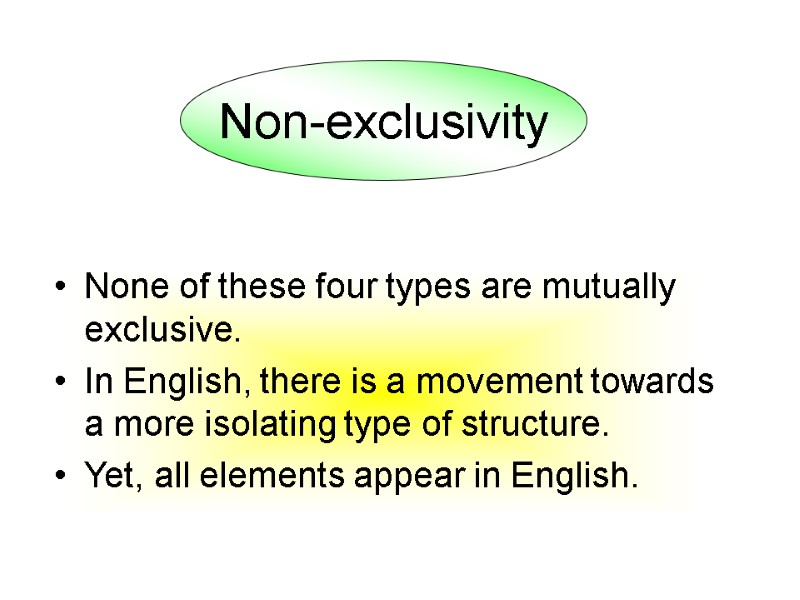
None of these four types are mutually exclusive. In English, there is a movement towards a more isolating type of structure. Yet, all elements appear in English. Non-exclusivity
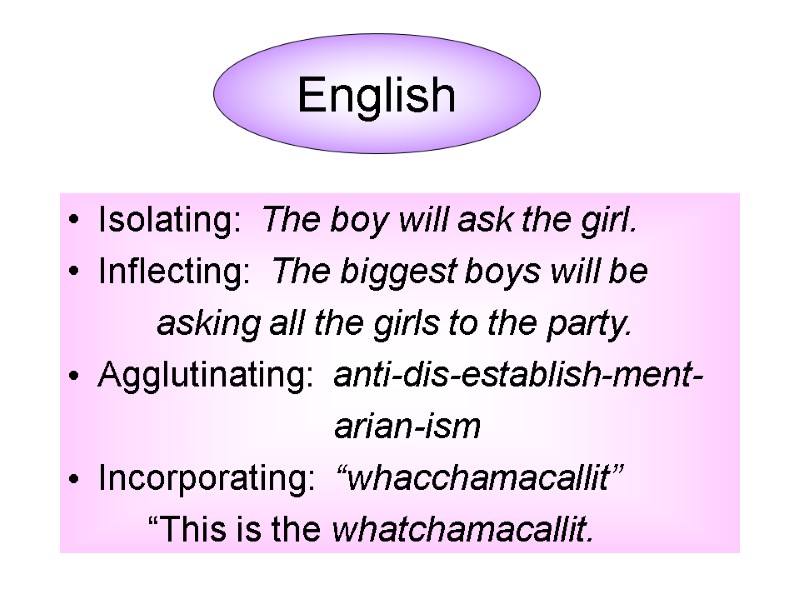
Isolating: The boy will ask the girl. Inflecting: The biggest boys will be asking all the girls to the party. Agglutinating: anti-dis-establish-ment- arian-ism Incorporating: “whacchamacallit” “This is the whatchamacallit. English
15740-l_2_types_of_languages_classification.ppt
- Количество слайдов: 21

